VENICE
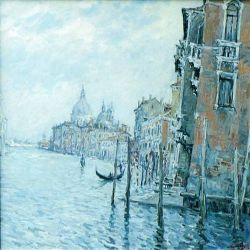 Palines on Canal Grande
Palines on Canal Grande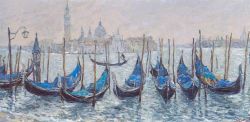 S.Giorgio Maggiore on Canal Grande
S.Giorgio Maggiore on Canal Grande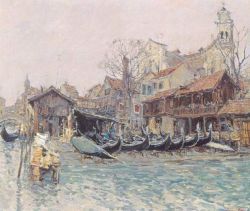 Squero di San Trovaso
Squero di San Trovaso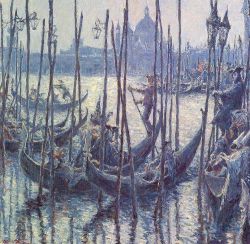 Venice, Canal Grande
Venice, Canal Grande Venitian Mirrors
Venitian Mirrors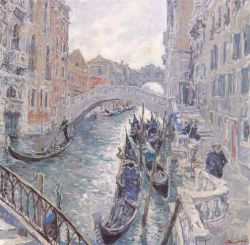 Ponte dei Sospiri
Ponte dei Sospiri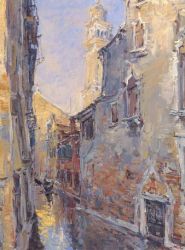 Rio di San Maurizio
Rio di San Maurizio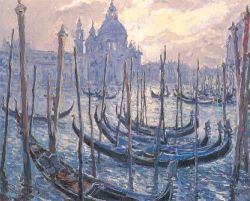 Chiesa della Salute at Dusk
Chiesa della Salute at Dusk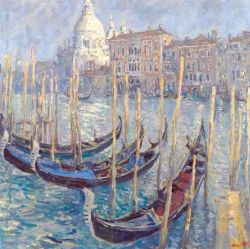 Gondolas on Canal Grande
Gondolas on Canal Grande
"Only a Russian... can reach his utmost Russian essence solely when he also feels completely European... To a Russian, Europe is just as dear as Russia and every stone there is precious to him. Europe has always been our homeland as much as Russia. In a way, even more so! I believe no one loves Russia more than I do, but I've never felt guilty for feeling that Venice, Rome and Paris—with all their treasures of art and human achievement, with all their history—are dearer to me than Russia. Oh, how dear are those ancient foreign stones, those marvels of God's world, those relics of holy miracles to the Russians! Indeed, they are dearer to us than to them, the natives of those lands!"
Dostoevsky, The Adolescent, Part 3, chapter 7
It is not the first time (nor probably the last) that Chepik has painted Venice - one of the outposts of the Latin world, which also looks out towards Slavic lands. The gilded domes and hieratic mosaics of Saint Mark's speak all the more to an Orthodox Russian's heart for they conjure up the former splendour of Aya Sofya and Byzantium, which seduced the Great Prince of Kiev and led to the baptism of Holy Russia ten centuries ago.
Venice and its "holy marvels" only revealed themselves to Chepik in 1990. He was 37 at the time and had just "chosen freedom" and settled in Paris. A first painting entitled "Venitian Masks" summed up his enthusiastic first impressions. Since then, Chepik has returned to Venice on numerous occasions and brought back either watercolours (1992) or large compositions on the theme of the carnival (1999) from these various trips.
In the autumn of 2000, it was also in Venice that Chepik started to work on plein-air studies for the first time in fifteen years. The humble Russian villages with their modest churches, which he painted in the Eighties, were replaced by the "holy marvels " of "la Serenissima", of which Dostoevsky spoke with love and nostalgia through his hero, Versilov. May Chepik not be accused of treachery towards his dear Russia! Quite the opposite is true if the above quotation is anything to go by.
With oils, pastels, lithographs and watercolours, Chepik pays homage to the leading city of European art in this latest exhibition. It was there that Serge Diaghilev (the harbinger of the saga of the Ballets Russes and of the Russian culture which lovingly set out to conquer the West at the beginning of the 20th century) symbolically passed away in 1929, at the same time that Russia shut itself off from the nourishing rays of "the sun of the old Europe", thus scorning Dostoevsky's cry.
Today, as 70 years of Communist totalitarianism has drawn to a close, Venice and its "holy marvels " speak once more to the hearts of Russian artists and in particular to that of Chepik.
Marie-Aude ALBERT

